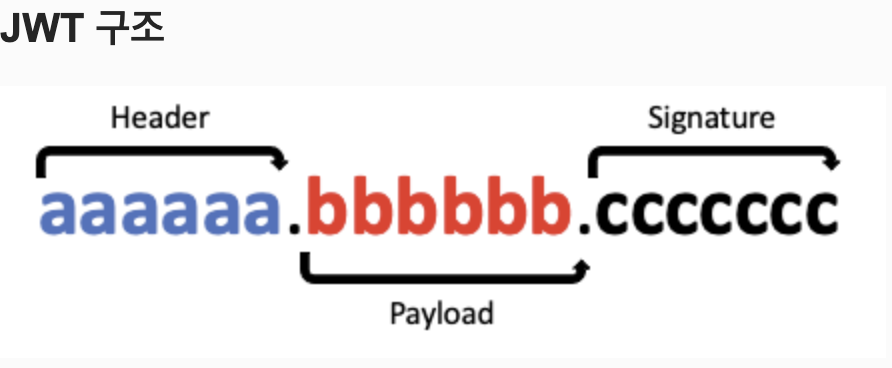Client
App.js
1) App 컴포넌트의 isLogin 상태에 따라 Mypage 혹은 Login 컴포넌트를 렌더링합니다. 적절한 props를 Mypage/Login 컴포넌트에 전달합니다.
import React, { Component } from "react";
import Login from "./components/Login";
import Mypage from "./components/Mypage";
class App extends Component {
constructor(props) {
super(props);
this.state = {
isLogin: false,
accessToken: "",
};
this.loginHandler = this.loginHandler.bind(this);
this.issueAccessToken = this.issueAccessToken.bind(this);
}
// app 화면 전환을 위한 조건
loginHandler() {
this.setState({
isLogin: true,
})
}
// 1) 핸들러를 Login, Mypage에 Props로 전달한다.
// 2) 로그인을 통해 accessToken을 획득할 예정이고, 해당 토근을 통해 App.js의 accessToken state값이 변경될 예정이다.
// 3) 그 토큰을 Props로 Mypage에 넘겨줄 예정이다.
issueAccessToken(token) {
this.setState({
accessToken: token
})
}
render() {} //...생략
export default App;
2) Login 컴포넌트의 loginRequestHandler메소드를 사용하여 상위 컴포넌트인 App 컴포넌트의 state를 적절히 변경시킵니다.
Login.js
class Login extends Component {
constructor(props) {
super(props);
this.state = {
userId: "",
password: "",
};
this.inputHandler = this.inputHandler.bind(this);
this.loginRequestHandler = this.loginRequestHandler.bind(this);
}
inputHandler(e) {
this.setState({ [e.target.name]: e.target.value });
}
// accessToken을 획득하는 메소드이다.
// 사용자 id와 pw를 서버 endpoint로 Body로 보낸다. (서버에서 해당 정보의 사용자가 있는지 확인해서 accessToken을 넘겨줄 예정이다.)
loginRequestHandler() {
axios
.post("https://localhost:4000/login",
{
userId: this.state.userId,
password: this.state.password
},
{
'Content-Type':'application/json',
withCredentials: true // cors 요청을 위해 필요하다.
})
.then((res) => {
this.props.loginHandler(); // 로그인 true로 변경해 주고,
this.props.accessTokenHandler(res.data.data.accessToken); // 서버에서 data라는 키로 정보를 넘길 예정인데, `res.data`로 접근해야 'data'라는 키에 접근하여 실제 토큰을 획득할 수 있다. 이 토큰은 App으로 전달될 예정이다.
}
);
}
render() {} //...생략
export default Login;Mypage.js
3) Mypage 컴포넌트 accessTokenRequest, refreshTokenRequest 메소드를 구현합니다.
class Mypage extends Component {
constructor(props) {
super(props);
this.state = {
userId: "",
email: "",
createdAt: "",
};
this.accessTokenRequest = this.accessTokenRequest.bind(this);
this.refreshTokenRequest = this.refreshTokenRequest.bind(this);
}
/*
App 컴포넌트에서 내려받은 accessToken props를 authorization header에 담아 요청을 보낸다. 서버에서 해당 토큰을 검증하여, 사용자에게 등록된 토큰이 맞으면 요청하는 정보를 전달해 준다.
*/
accessTokenRequest() {
axios
.get("https://localhost:4000/accesstokenrequest",
{ headers: {
Authorization: `Bearer ${this.props.accessToken}`
}
},
{
withCredentials: true
})
.then((res) => {
this.setState({
userId: res.data.data.userInfo.userId,
email: res.data.data.userInfo.email,
createdAt: res.data.data.userInfo.createdAt})
})
}
/*
accessToken이 만료되면 refreshToken을 통해 accessToken을 다시 생성할 수 있어야 한다. 서버에 담긴 refreshToken
*/
refreshTokenRequest() {
axios
.get("https://localhost:4000/refreshtokenrequest",
{ withCredentials: true }
)
.then((res) => {
this.setState({
userId: res.data.data.userInfo.userId,
email: res.data.data.userInfo.email,
createdAt: res.data.data.userInfo.createdAt})
this.props.accessTokenHandler(res.data.data.accessToken)
}
)
}Server
1) JWT 활용 방법
- JWT의 구조
- 토큰 생성하기
const jwt = require('jsonwebtoken'); const token = jwt.sign(토큰에_담을_값, ACCESS_SECRET, { 옵션1: 값, 옵션2: 값, ... }); // .sign(payload, 비밀키, header)로 토큰 생성
- 토큰 검증하기
jwt.verify(token, secretkey, 익명함수)
- token: client에게서 받은 token
- secretkey : token 생성 시 사용했던 secretKey
- 3번째 인자로 들어간 익명함수 : 유효성 검사 결과를 처리할 callback 함수
login.js
1) request로부터 받은 userId, password와 일치하는 유저가 DB에 존재하는지 확인합니다.
- 일치하는 유저가 없을 경우 : 로그인 요청을 거절합니다.
- 일치하는 유저가 있을 경우 :
필요한 데이터를 담은 두 종류의 JWT(access, refresh)를 생성합니다.
생성한 JWT를 적절한 방법으로 반환합니다.
access token은 클라이언트에서 react state로 다루고 있습니다.
refresh token은 클라이언트의 쿠키에서 다루고 있습니다.
module.exports = async (req, res) => {
// App 클라이언트에서 보낸 id와 pw로 사용자 데이터를 수집
const userInfo = await Users.findOne({
where: { userId: req.body.userId, password: req.body.password },
})
if (!userInfo) {
res.status(401).json({data: null, message: 'not authorized'})
} else {
const { id, userId, email, createdAt, updatedAt } = userInfo
// jwt.sign(payload, 비밀키값, header)
const accessToken = jwt.sign({ id, userId, email, createdAt, updatedAt }, process.env.ACCESS_SECRET, {
algorithm : "HS256", // 해싱 알고리즘
expiresIn : "1h", // 토큰 유효 기간
});
console.log('accessToken', accessToken)
const refreshToken = jwt.sign({ id, userId, email, createdAt, updatedAt }, process.env.REFRESH_SECRET, {
algorithm : "HS256", // 해싱 알고리즘
expiresIn : "3h", // 토큰 유효 기간
});
// refreshToken은 쿠키에, accessToken은 응답에 답아 전달한다.
res.status(200)
.cookie('refreshToken', refreshToken, {
domain: 'localhost',
path: '/',
httpOnly: true,
secure: true,
sameSite: 'None',
})
.json({data: {accessToken}, message: 'ok' })
}
}accessTokenRequest.js
1) Login 클라이언트에서 get요청을 해당 end point로 autorization 헤더로 accessToken을 보냈다.
2) accessToken은 'Bearer xxxxxx....'와 같이 전달되어 const token = accessToken.split(' ')[1];로 accessToken값만 추출할 수 있다.
2) 해당 accessToken을 jwt.verify로 검증을 한다. callback으로 들어가는 비동기 함수에 의해 data에 토큰 생성에 보냈던 사용자 정보 (payload)의 내용이 들어가게 된다.
module.exports = async (req, res) => {
const accessToken = req.headers['authorization'];
if (!accessToken) {
res.status(400).json({ data: null, message: "invalid access token" })
} else {
const token = accessToken.split(' ')[1];
jwt.verify(token, process.env.ACCESS_SECRET, async (err, data) => {
const userInfo = await Users.findOne({
where: { userId: data.userId },
})
if (!userInfo) {
res.status(400).json({ data: null, message: "access token has been tempered" })
} else {
const { id, userId, email, createdAt, updatedAt } = userInfo;
res.status(200).json({ data: {userInfo: { id, userId, email, createdAt, updatedAt } }, message: "ok" })
}
})
}refreshTokenRequest.js
1) 로그인 당시 서버는 클라이언트 cookies에 refreshToken을 넣어 주었다.
2) accessToken과 같이 해당 refreshToken을 검증한다.
3) refreshToken 토큰 검증을 통해 얻은 사용자 정보로 새 accessToken을 생성하는 과정이다.
module.exports = (req, res) => {
const token = req.cookies.refreshToken;
if (!token) {
res.status(400).json({ data: null, message: "refresh token not provided" })
}
jwt.verify(token, process.env.REFRESH_SECRET, async(err, data)=>{
if (err) {
res.status(400).json({data: null, message: "invalid refresh token, please log in again"})
} else {
const userInfo = await Users.findOne({
where: { userId: data.userId }
});
if (!userInfo){
res.status(400).json({ data: null, message: "refresh token has been tempered"})
} else {
const { id, userId, email, createdAt, updatedAt } = userInfo;
const accessToken = jwt.sign(
{id, userId, email, createdAt, updatedAt},
process.env.ACCESS_SECRET,
{expiresIn: '1h'}
);
res.status(200).json({
data: {
accessToken,
userInfo: { id, userId, email, createdAt, updatedAt }
},
message: 'ok'
});
}
}
});
};정리
1) 토큰은 클라이언트에 state로 관리되고 있었다.
2) 서버는 소유하고 있던 acceessSecret, refreshSeceret Key를 가지고 토큰 생성 및 검증만 진행한다.
3) refreshToken을 쿠키로 클라이언트에 심어 놓아서, accessToken이 만료되면, refreshToken의 기한 내에 새 accessToken을 생성할 수 있다.
4) JWT (JSON Web Token)을 통해 sign (생성 또는 토큰 암호화), verify (검증 또는 토큰 복호화)를 통해 사용자 정보를 활용한다.

